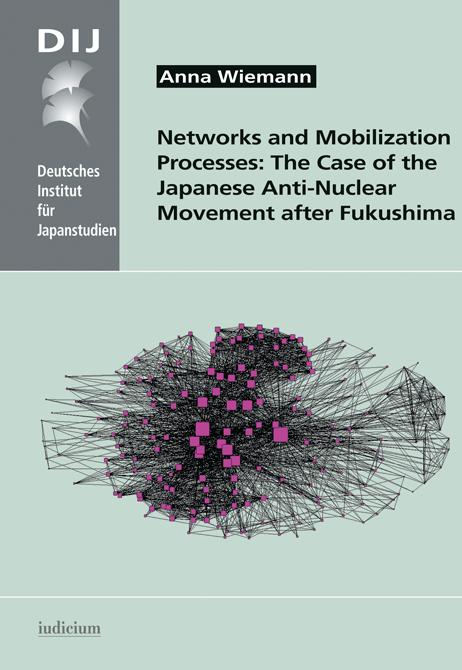Japan und Ostasien
Germanistik /
Deutsch als Fremdsprache
Kulinaristik
Kulturwissenschaften
|
 |
Senden Sie Fragen oder Kommentare zu dieser Website an:
info@iudicium.de
iudicium verlag
Dauthendeystr. 2 · 81377 München
Deutschland
Copyright · 2024
|
|
| |
|
 Anna
Wiemann Anna
Wiemann
Networks and Mobilization Processes: The
Case of the Japanese Anti-Nuclear Movement after Fukushima
2018 · ISBN
978-3-86205-049-9 · 297 Seiten, geb. · EUR 50,—
Monographien, herausgegeben vom Deutschen Institut für Japanstudien (Bd.
61)
Environmental disasters or other large-scale disruptive events often
trigger the emergence of social movements demanding social and/or political
change. This study investigates mobilization processes at the meso level of
the Japanese anti-nuclear movement after the nuclear disaster at the
Fukushima Daiichi nuclear power plant caused by the Great East Japan
Earthquake and subsequent tsunami waves on March 11, 2011. To capture such
meso level movement dynamics – which so far have played only a minor role in
research on social movement mobilization – the study presents an analytical
model based on premises from political process theory, network theory, and
relational sociology. This model is then applied to the case of the Japanese
anti-nuclear movement after Fukushima by looking at the relational dynamics
of two coalitional movement networks engaged in advocacy-related activities
in Tōkyō. The first case study is e-shift, a network-coalition working for
nuclear phase-out and the promotion of renewable energy; the other is SHSK
(Shienhō Shimin Kaigi), a coalition pushing for the rights of people
affected by radioactive contamination and/or evacuation from contaminated
areas. The study traces the mobilization processes of these two networks by
analyzing data gathered in 2013 and 2014 in the form of participant
observation of movement events, semi-structured interviews with movement
organization representatives, and documentary data.
TABLE OF CONTENTS:
1 Introduction
2 Social Movements, Mobilization, and Networks: A
Relational Perspective
3 Applying Empirical Methods to the Network
Mobilization Model
4 e-shift: Networking for Nuclear Phase-Out and
Renewable Energy
5 Shienhō Shimin Kaigi (SHSK): Networking for Nuclear
Victims’ Rights
6 Network Mobilization Processes after 3.11
7
Conclusion
References
Appendix
I. Public Movement Events
II.
Network Meetings
III. Qualitative Interviews
IV. Interview Guide for
Semi-Structured Interviews
V. e-shift Booklets: Argumentative Structures
|
|
|
|
